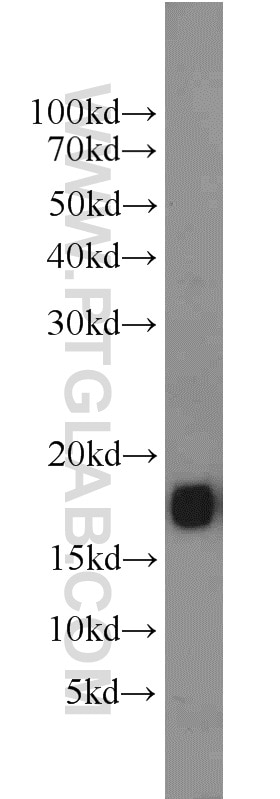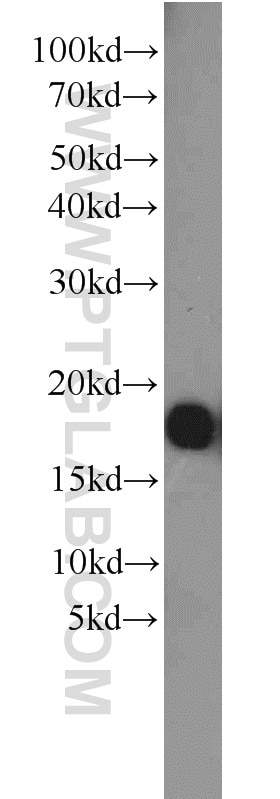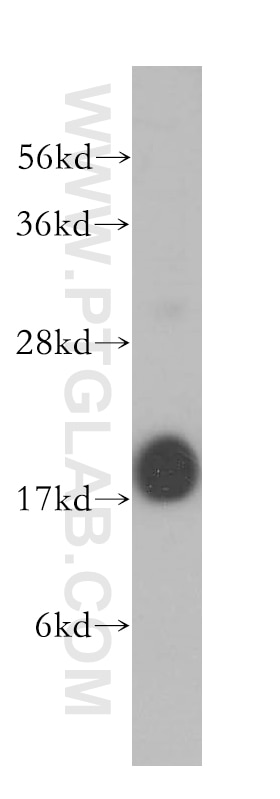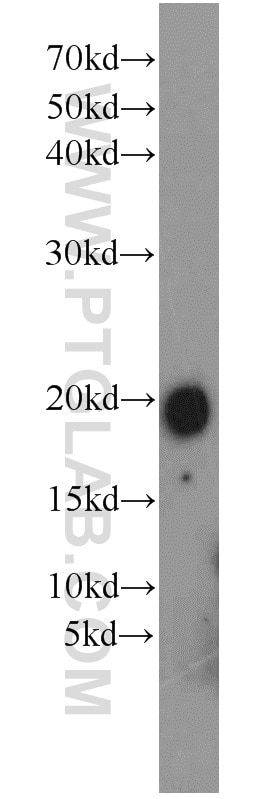Validation Data Gallery
Tested Applications
| Positive WB detected in | mouse brain tissue, human brain tissue, rat brain tissue |
Recommended dilution
| Application | Dilution |
|---|---|
| Western Blot (WB) | WB : 1:500-1:1000 |
| It is recommended that this reagent should be titrated in each testing system to obtain optimal results. | |
| Sample-dependent, Check data in validation data gallery. | |
Product Information
11465-1-AP targets FXYD7 in WB, ELISA applications and shows reactivity with human, mouse, rat, pig samples.
| Tested Reactivity | human, mouse, rat, pig |
| Host / Isotype | Rabbit / IgG |
| Class | Polyclonal |
| Type | Antibody |
| Immunogen |
CatNo: Ag2030 Product name: Recombinant human FXYD7 protein Source: e coli.-derived, PGEX-4T Tag: GST Domain: 1-80 aa of BC018619 Sequence: MATPTQTPTKAPEEPDPFYYDYNTVQTVGMTLATILFLLGILIVISKKVKCRKADSRSESPTCKSCKSELPSSAPGGGGV 相同性解析による交差性が予測される生物種 |
| Full Name | FXYD domain containing ion transport regulator 7 |
| Calculated molecular weight | 9 kDa |
| Observed molecular weight | 18-20 kDa |
| GenBank accession number | BC018619 |
| Gene Symbol | FXYD7 |
| Gene ID (NCBI) | 53822 |
| RRID | AB_2108627 |
| Conjugate | Unconjugated |
| Form | |
| Form | Liquid |
| Purification Method | Antigen affinity purification |
| UNIPROT ID | P58549 |
| Storage Buffer | PBS with 0.02% sodium azide and 50% glycerol{{ptg:BufferTemp}}7.3 |
| Storage Conditions | Store at -20°C. Stable for one year after shipment. Aliquoting is unnecessary for -20oC storage. |
Background Information
FXYD7 (FXYD domain containing ion transport regulator 7) is a single-pass membrane protein that belongs to the FXYD family. The FXYD family, which contains seven members, are tissue specific regulators of the Na,K-ATPase. Expressed exclusively in the brain, FXYD7 is an isoform-specific Na,K-ATPase regulator which could play an important role in neuronal excitability. It has been reported that FXYD7 bears post-translationally added modifications on threonine residues and has an apparent molecular weight of 18 kDa (PMID: 12093728).
Protocols
| Product Specific Protocols | |
|---|---|
| WB protocol for FXYD7 antibody 11465-1-AP | Download protocol |
| Standard Protocols | |
|---|---|
| Click here to view our Standard Protocols |




